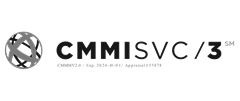Semantic Search Technology (SST):
REGISTER FOR OUR HANDS-ON DEMO HERE!
• Incorporates archived and streaming data from multiple for concept and entity identification, data cleansing and curation, and to create and maintain an ontology and populate large scalable databases to quickly identify, rank, and condense relevant data into actionable information.
• Ingests, parses, indexes, and tags via Natural Language Processing, and does clustering by both defined and emergent associated words based on relationships discovered within the files of interest.
• Allows you to easily and intuitively defines “facets” you want for your searches in addition to the built-in facets such as file type, people, organization, date range, to and from, as well as the custom defined emergent facets developed automatically on the fly.
• Is the easiest way to do both an “early assessment” of enterprise data on any topic, and to do the “deep dive” to begin converting enterprise information to knowledge.
• Backs up files and extends governance of your enterprise files to meet legal and regulatory requirements.
• Allows you to view file summaries quickly and easily.
• Allows you to view files in their native format.
• Allows you to Save, share, and reuse searches.
Reference World Information Synthetic Environment (RWISE):
Reference World Information Synthetic Environment (RWISE) is an Agent Based Modeling and Simulation capability that allows for the true complexities in life to be maintained in the simulation, allowing for emergent phenomenon that cannot be factored into the simulation with any other type of tools. Other modeling tools base results on repetition of historical data and events loaded into the system to return forced-choice results. RWISE escapes the “forced choice” paradigm. It also provides sentiment analysis and predictive sentiments and accounts for complex interaction of factors. You can’t factor every variable into your model but RWISE can do that for you.
• Uses multiple data sources to provide a broad and deep understanding of likely outcomes
• Derives the individual traits, influences, factors, and milestones that have the most impact on results.
• Models the traits, sensors, environment and well-being of each entity – organization or individual. Well-being creates a predictive connection between events in the entity’s environment and individual motivation, decisions, and outcomes.
• Shows how strategies are best customized for groups. Helps us write policy and rules that allow for the desirable variation.
• Keeps a real time geographic view, a needs analysis and testing environment for collaborative leaders solving complex problems with limited resources.
• Use data to build more effective and efficient collaboration among key partners as these entities work to address complex social issues across individuals and place, through more targeted interventions that support a whole person approach;
• Maximize previous investments made in organizations and organization of data systems.







